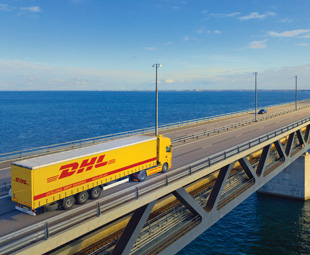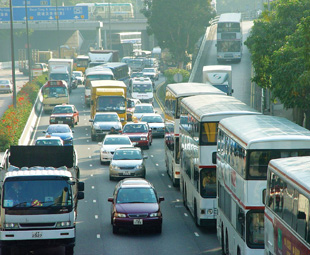Expecting the unexpected in Asia Pacific

The transport and logistics sector in the Asia Pacific region has been, and still is, developing at a fast rate. But with supply chain and logistics disruptors, such as the likes of natural disasters, BLAIR BURMEISTER finds out how logistics companies within the region are restructuring their services to avoid such circumstances.
The transport and logistics industry in the Asia Pacific region has flourished over the past few years, despite the economic weaknesses of its largest trade partners – the United States and the European Union.
However, supply chain and logistics providers need to manage multiple risks along the sourcing, transport and distribution chain – and in the Asia Pacific region the reality of some of these risks are major natural disasters. The floods in Thailand and the earthquake in Japan in 2011 demonstrated the vulnerability of transport networks.
Assessing the future is a complex undertaking. But when a transport network within a supply chain is disrupted, it can cause a ripple effect, resulting in huge company losses. With rising awareness of the cost of disruptions within the transportation division of the supply chain, companies are looking at re-designing the supply chain to focus intensely on calculating and managing risk.
“Unfortunately it is difficult to make provisions for unknown events, but we put a huge amount of time and effort into disaster recovery,” says DHL supply chain CEO Asia Pacific, Paul Graham. “This was increased when the 2011 disasters struck in Thailand and Japan.”
He adds: “These disasters could happen at any time within the areas surrounding the region that we operate in. We have to be able to respond quickly and our clear and precise processes are updated on a regular basis.”
Graham reveals that DHL has to take natural disasters very seriously as they are more common to the Asia Pacific region than any other area the company operates in.
He continues: “Awareness of natural disasters as a top external disruptor will continue for the next while, particularly in Japan, where the earthquake in 2011 caused a major ripple effect, particularly into areas such as China. Due to the cost it had on our transportation and logistics services, we had to up our game in terms of awareness, to make sure we have back-up plans.”
Mr. Gopal R, Vice President, transportation and logistics practice Asia Pacific at Frost & Sullivan, agrees: “Supply chain and transport networks are becoming increasingly complex. Major disruptions in the past five years have resulted in more discussion of risk preparedness within these networks, specifically in the Asia Pacific region.”
Since 2011, 60 percent of experts have indicated that natural disasters are most likely to cause supply chain and transportation disruptions. This is according to a recent report by the World Economic Forum which explores new models for addressing supply chain and transport risk. This means that transport and logistics companies who have strong presence in the Asia Pacific region, have had to tighten up on the vulnerability of the supply chain and transport network system.
Gopal comments: “Due to the significant impact of such events on business process continuity, brand value and overall profitability, transportation and logistics networks have had to become more resilient.”
Graham expands: “Within this region political instability, economic instability and poor infrastructure are other aspects of risk that have to be incorporated.”
 He explains that governments, the Chinese in particular, are pushing logistics businesses to invest in tier two and three cities. This is another area where DHL has had to make provisions to mitigate for risks. “For us to begin operations in these cities will result in major risks due to poor road infrastructure, which we are currently taking into consideration.”
He explains that governments, the Chinese in particular, are pushing logistics businesses to invest in tier two and three cities. This is another area where DHL has had to make provisions to mitigate for risks. “For us to begin operations in these cities will result in major risks due to poor road infrastructure, which we are currently taking into consideration.”
An increase in extreme weather events could also potentially interrupt these under-developed trade routes on a frequent basis, raising capital costs for logistics companies.
A scenario study, published by Deutsche Post DHL titled: “Logistics 2050, Delivering Tomorrow”, reveals that the future resilient world in 2050, relies on a logistics sector that ensures supply security as top priority, with back-up infrastructure to guarantee reliable transport in unstable and hazardous times with the aim of carbon reduction.
Although the study is aimed at the distant future, it seems the aim of carbon reduction within the logistics network is already a huge area of focus, with countries such as China, pressurising supply chain and logistics companies to incorporate new solutions to relieve transportation congestion and to improve sustainability.
The issue of climate change, particularly in congested, high carbon-emission areas such as Hong Kong and Thailand, is affecting the focus of sustainable solutions within the transport sector.
Gopal notes: “This is definitely a top focus. Providing sustainable logistics solutions has become more a need than a trend in the region. This is evident in the way they (companies) pitch their optimal transport solution to save fuel and reduce emissions.”
DHL is recognised as a leading player in logistics within Asia and globally and its strong sustainability outcomes are an area of great importance. Graham explains: “Due to the emergence of environmental modernisation among authorities, consumers and organisations in places such as China, it has become increasingly important for us to incorporate sustainable supply chain and transportation solutions.”
He expands: “We are altering the type of vehicles we are using, and are looking at using electric vehicles. We have vehicle tracking and also monitor driver behaviour to reduce fuel consumption. In Thailand, where we have a very large fleet of trucks, we are incorporating a common route to reduce extensive travelling. We are also constantly looking at new technology, such as the use of bio-fuels.”
DHL is also a member of the Green Freight Asia Network (GFAN) which tackles fuel efficiency and reduced emissions in Asia. The impact of freight traffic movement on the environment and society is high, particularly in areas such as India where only five percent of vehicles are trucks, yet they manage to consume 46 percent of transport fuel and generate 63 percent of CO2 emissions.
GFAN aims to enhance collaboration among shippers, carriers and logistics service providers to share best practice and jointly scale up green freight efforts through advanced technologies, strategies, capacity building and financing solutions. GFAN develops consistent methods for measuring and reporting fuel, CO2 and other emissions from road freight to establish a centralised database.
Graham comments: “As part of GFAN we continue to drive industry debate and innovations in incorporating environmental sustainability in our logistics solutions.”
He reveals that DHL recognises the transport sector is a huge contributor to global emissions, and the company has committed itself to delivering solutions that respond to the environmental challenges the division faces in the heavily emission-congested areas in the Asia Pacific region.
The company’s GoGreen campaign, a global initiative, is working hard to bring the commitment of environmental sustainability to life – in all aspects of service. The transport sector currently represents 14 percent of global carbon emissions and DHL has become the first logistics company to establish carbon efficiency targets, to remain at the forefront of innovation, and to reduce its emission contributions in areas such as Hong Kong and Thailand.
Published by
Focus on Transport
focusmagsa




